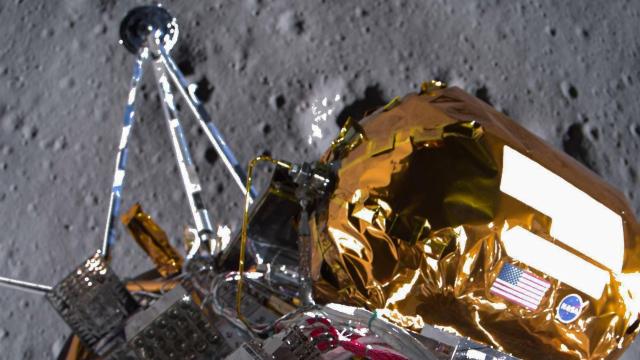It was a topsy-turvy month in spaceflight, with yet another lunar lander falling over and an upsetting new view showing NASA’s Ingenuity helicopter missing a rotor blade, among other memorable moments.
February is the shortest month of the year, but it often packs a punch and feels a helluva lot longer than it should. Such was the case this year, especially in the world of spaceflight and astronomy, which witnessed a combination of victories and setbacks. Here are our favorite and most compelling images from the past month.
Mother lode
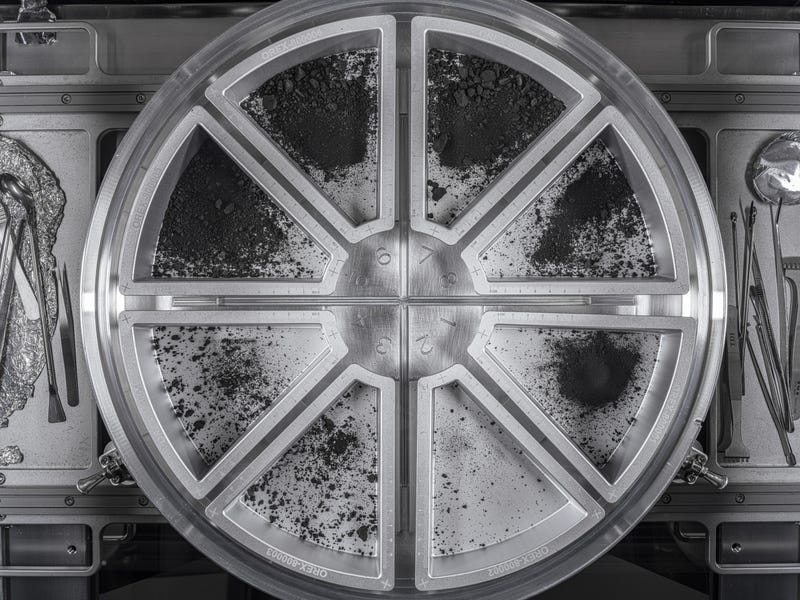
This was the image we had all been waiting for—a clear view of the asteroid material tucked inside NASA’s sample container. NASA finally managed to crack open this pesky cookie jar, revealing that its OSIRIS-REx spacecraft brought back an impressive 4.29 ounces (121.6 grams) of material from asteroid Bennu, exceeding the mission’s goal by more than double. This announcement, made on February 15, comes three years after the spacecraft collected the samples. The material, housed in eight wedge-shaped steel containers, are shown here accompanied by stainless steel examination tools.
Moonbound

Intuitive Machines’ Odysseus lander, while en route to the Moon, began to beam images back to Earth on February 16, one day after launching. It performed a reasonably successful landing on February 22, reaching the surface but then tipping over at an awkard angle. It wasn’t the smoothest of landings, but it was a touchdown nonetheless, making it the first private mission to successfully land on the lunar surface. It also marked the United States’ first return to the Moon’s dusty terrain since the Apollo era. The image above shows Earth through a 186-degree-wide camera view, and it depicts the distorted spacecraft as if perched to the side of our planet.
Comin’ down hot ‘n busted
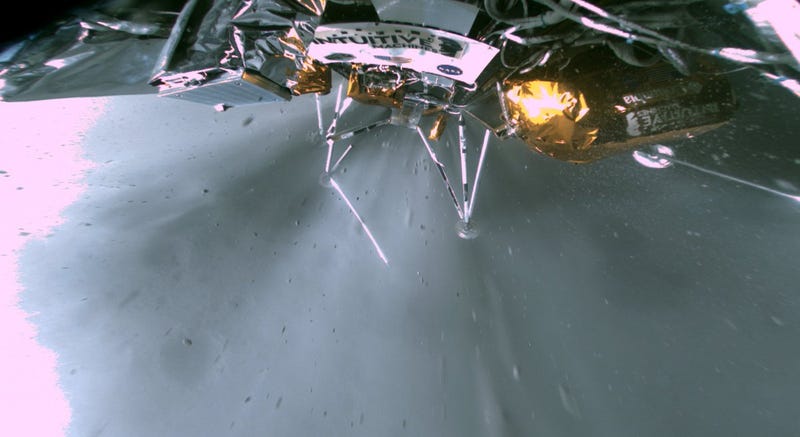
One of the more dramatic images from the IM-1 mission shows Odysseus making contact with the lunar surface. With the spacecraft’s descent engine throttling, and with the lunar dust flying around as a result, Odysseus’ busted leg is clearly visible. Despite the awkward landing and its approximately 30-degree tilt, Odysseus managed to collect solar power before shutting down, likely permanently, for the lunar night. Both Intuitive Machines and NASA (which funded the project) declared the mission a success.
Boostback burn

This long-exposure image, captured during the launch of Intuitive Machines’ IM-1 mission, shows the SpaceX Falcon 9 boostback burn, as the first stage adjusted its flight path in preparation of landing. This process creates bright, dynamic plumes of fire and smoke, which are visually striking, especially against the backdrop of the sky.
Sun splotches of unusual size
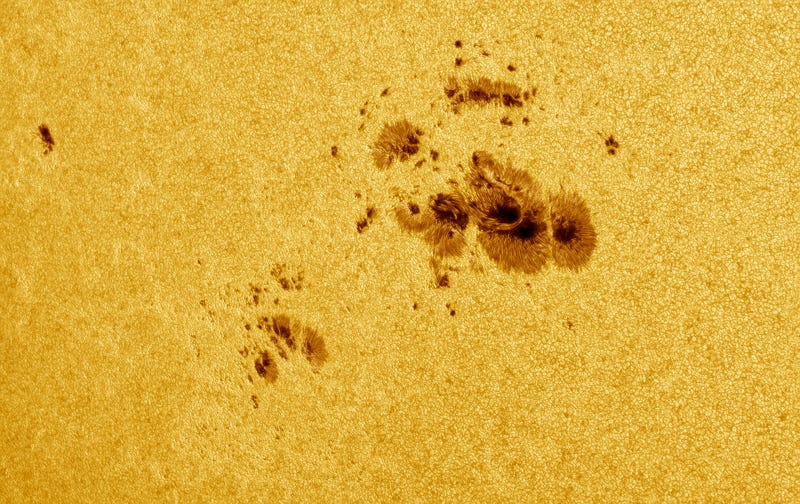
In February, an unusually large cluster of sunspots, designated AR3576, captured the attention of astronomers, space enthusiasts, and concerned space weather forecasters. According to SpaceWeather, these sunspots encompassed a distance of over 93,200 miles (150,000 kilometers), with at least four of the freckles being larger than the Earth itself. Currently, we’re near the peak of the Sun’s 11-year cycle, making features such as these par for the course.
JEM says hi
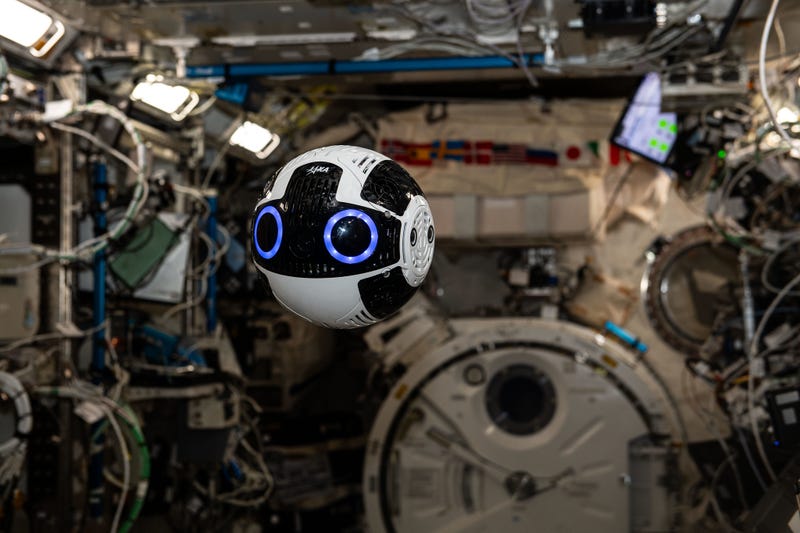
Japan’s free-flying robotic camera, floating inside the Kibo lab of the ISS, made an appearance in late February. Known as JEM (Japanese Experiment Module) Internal Ball Camera 2, the device is “being tested for its ability to autonomously maneuver and navigate aboard the International Space Station while photographing and videotaping crew activities,” according to NASA.
A Star Wars battle in low Earth orbit?
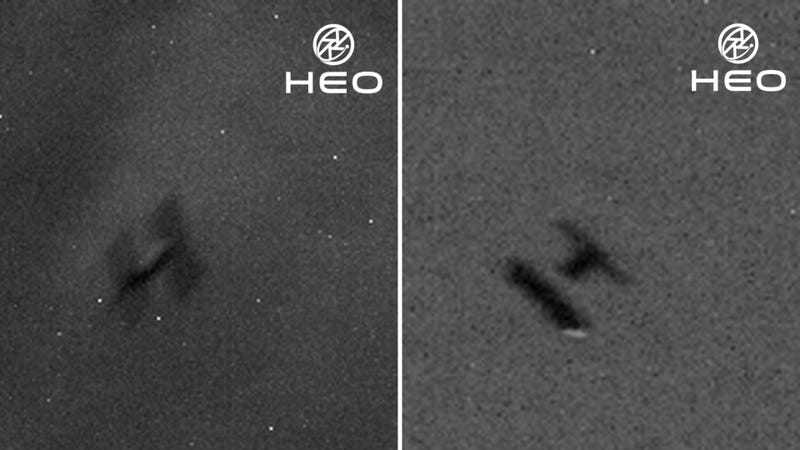
Pew, pew, pew! Well, not exactly. This object in low Earth orbit certainly bears an uncanny resemblance to a Star Wars TIE starfighter, but in reality it’s the European Space Agency’s ERS-2 satellite, which performed an uncontrolled reentry on February 21. Launched in 1995, ERS-2 played a pivotal role in Earth observation, leaving a lasting legacy in environmental monitoring and climate research through its advanced radar and remote sensing capabilities.
Double plumes at Io

NASA’s Juno had another close encounter with Jupiter’s moon Io, during which it observed striking evidence of volcanic activity. The spacecraft captured images that seem to show two volcanic plumes erupting simultaneously from Io’s surface, offering further insights into the moon’s geologically active nature.
Badly busted chopper
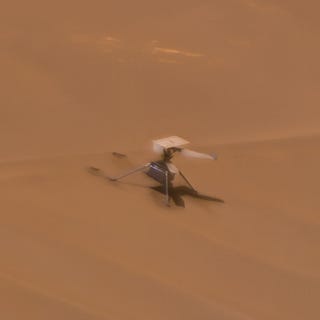
Oof, not the image we were hoping to see. The groundbreaking Mars mission is over, but Ingenuity, with at least one of four rotor blades completely missing, is in worse shape than we imagined. On February 26, the Perseverance rover used its SuperCam Remote Micro-Imager (RMI) to capture an image of its damaged counterpart. Visual artist Simeon Schmauss then processed this image to enhance its clarity and adjust it to resemble how it would appear to the human eye. “One rotor blade is broken off completely, the others have damaged tips,” Schnauss said on X.
Goodnight, Moon
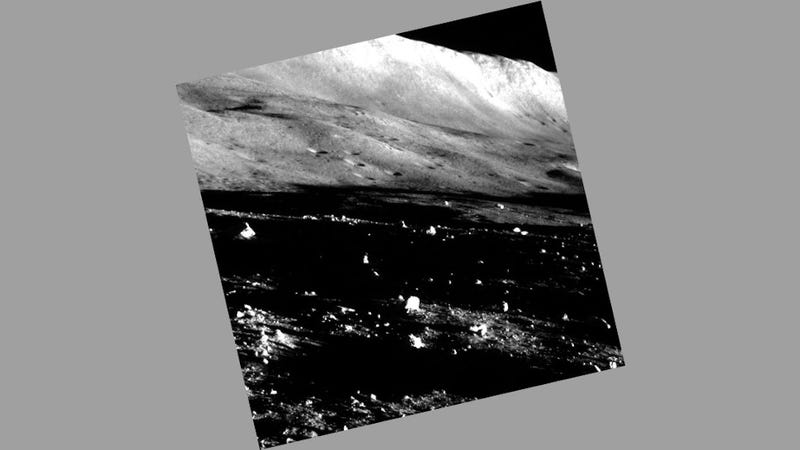
Japan’s SLIM lander entered a dormant state at the beginning of the month, but not before capturing and transmitting a final image of the lunar landscape taken at dusk. SLIM performed a soft landing on January 19 and, despite performing an awkward face-plant, managed to recharge its battery and resume operations for a short period. SLIM wasn’t expected to survive the 14-day lunar night, but it miraculously withstood the frigid temperatures, transmitting a signal back to Earth on February 26.
New Moon around Uranus and Neptune
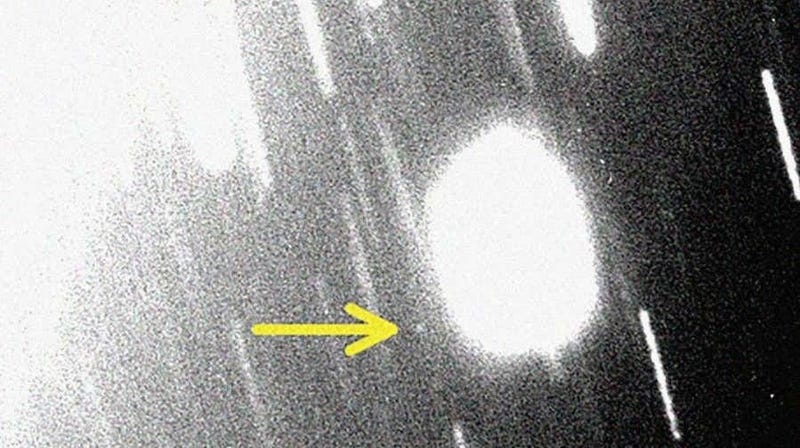
Sure, this isn’t the prettiest image in the world, but it shows something rather special and rare: a newly discovered moon around Uranus. Astronomers spotted this new moon, including another around Neptune, using ground-based observatories.
Aurora Australis
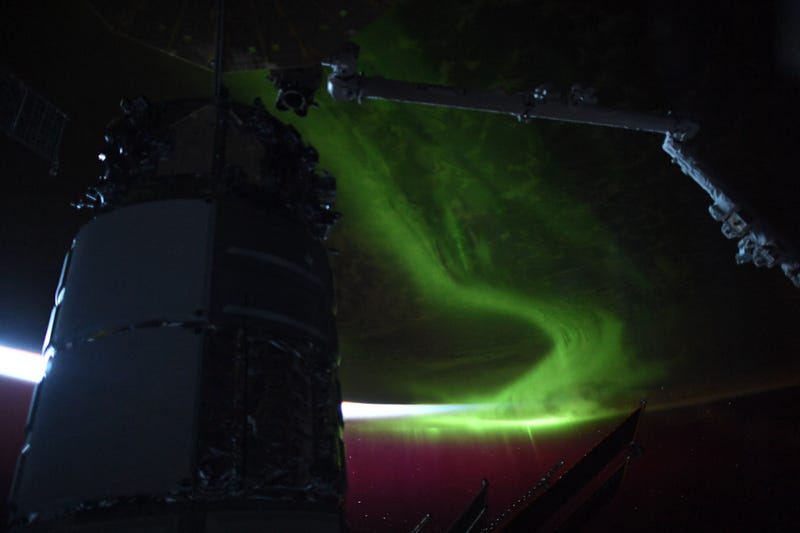
NASA astronaut Jasmin Moghbeli captured this stunning view of the southern lights from the ISS. “Sometimes I can’t believe this is our planet, OUR home,” she said on X. “How lucky we are to live somewhere so spectacular and alive. I will definitely miss these views, but I look forward to exploring more of our planet and the beautiful views from the ground.” ISS astronauts have been treated to rare and spectacular atmospheric displays, a result of the Sun being in its solar maximum stage.
A solar eclipse as seen from Mars
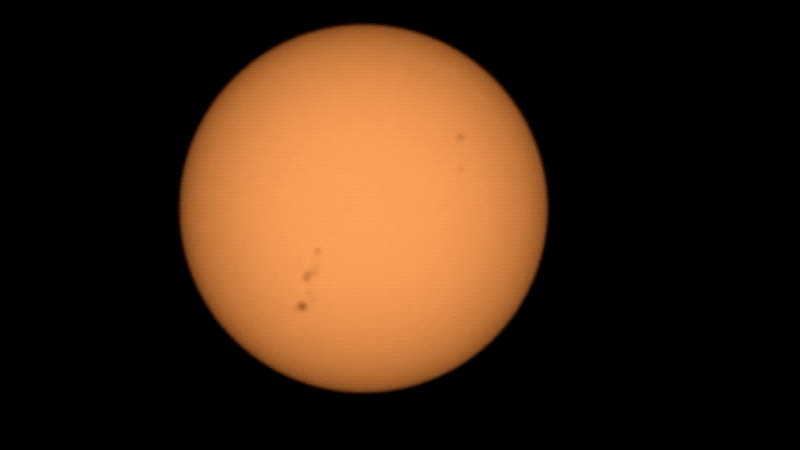
In February, NASA’s Perseverance rover captured this amazing solar eclipse on Mars, showing the moon Phobos passing in front of the Sun. Hmm, those sunspots look awfully familiar…
Get a grip
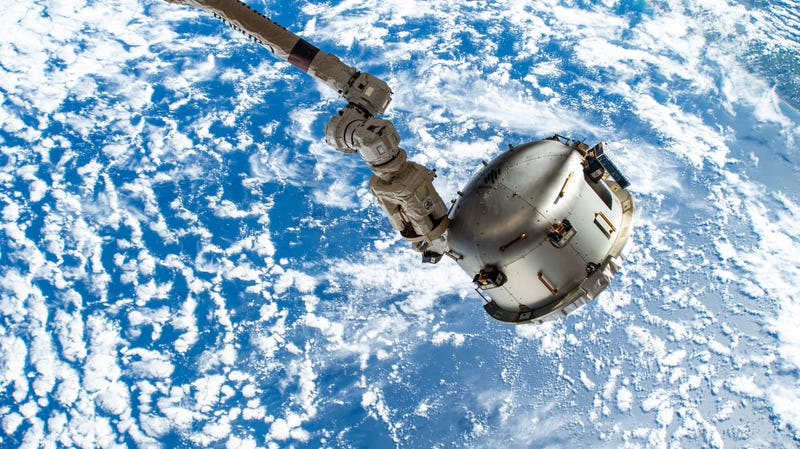
This February 21 image from the ISS shows the NanoRacks Bishop airlock attached to Canadarm2’s robotic hand-like attachment (or in industry speak, the latching end effector). The airlock can be uninstalled from its regular location on the Tranquility module for portable operations, and also for stowing cargo or extracting payloads. The ISS was above the Atlantic Ocean when this beautiful image was captured.
